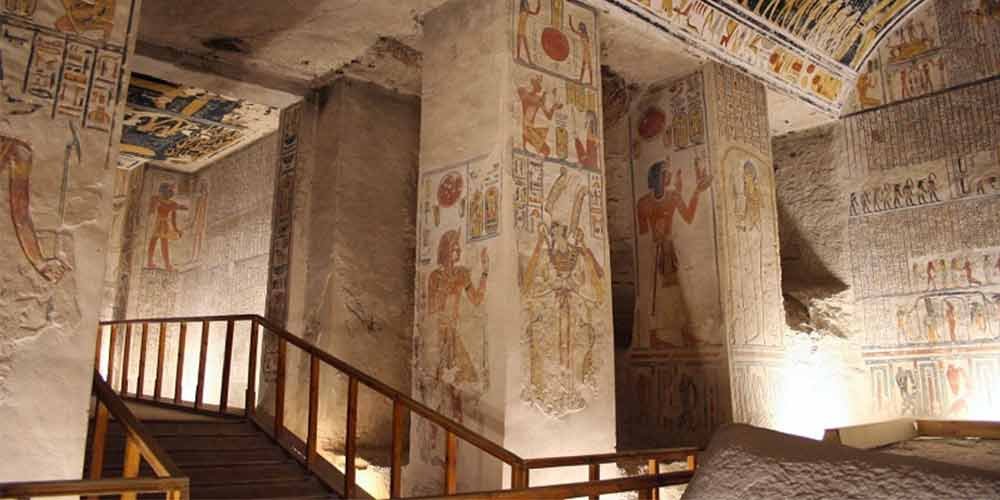Guardians of the Afterlife: Delving into the Valley of the Kings’ Depths
In the heart of ancient Thebes, present-day Luxor in Egypt, the Valley of the Kings stands as a testament to the grandeur, intricacies, and profound beliefs of the ancient Egyptian civilization. This archaeological gem is not just a collection of tombs, but a portal that takes us into the afterlife beliefs and funerary practices of the New Kingdom pharaohs.
Geography and Discovery
Nestled between the imposing limestone hills of the western bank of the Nile River, the Valley of the Kings is an arid and desolate wadi (a dry riverbed). This remote location was chosen not only for its seclusion, which was hoped to deter tomb robbers, but also because of its symbolic association with the sun god Ra, who descended into the underworld in the west.
For many years, the tombs remained hidden from the world, buried beneath the sands of time. But as archaeology emerged and grew during the 19th and 20th centuries, so too did the secrets of this valley. The discovery of King Tutankhamun’s nearly intact tomb by Howard Carter in 1922 catapulted the Valley of the Kings to worldwide fame.
 Tombs and Their Inhabitants in the Valley of the Kings
Tombs and Their Inhabitants in the Valley of the Kings
With over 60 known tombs, each structure in the Valley of the Kings is a masterpiece of ancient engineering and religious symbolism. The tombs vary in size, from relatively small chambers to vast, labyrinthine complexes. They were constructed to serve as the eternal resting places for the pharaohs of the New Kingdom period, which spanned the 16th to 11th centuries BCE.
Notable tombs include:
- KV62: The tomb of the young Pharaoh Tutankhamun, which was found filled with treasures and artifacts.
- KV34: The final resting place of Thutmose III, which features a unique oval-shaped burial chamber.
- KV9: Occupied by Ramses V and Ramses VI, known for its beautifully colored decorations.
Each tomb is adorned with intricate reliefs and hieroglyphics that detail the deceased’s journey to the afterlife, spells from the “Book of the Dead,” and scenes of daily life.
Architecture and Decoration of the Valley of the Kings
The tombs’ designs evolved over time. Earlier tombs had a straight axis, but later ones had corridors that changed direction. The burial chamber, usually the deepest part of the tomb, held the sarcophagus of the pharaoh. These chambers are usually vaulted or have a domed ceiling, representing the sky.
Decoration played a crucial role in the tombs. The walls were adorned with scenes depicting the deceased’s hoped-for existence in the afterlife, the gods they would encounter, and spells to ensure their safe passage. The bright blues, yellows, and reds that dominate the artwork remain vivid even today, granting a rich visual experience to visitors.

Robbery and Conservation
Sadly, the remoteness of the Valley of the Kings didn’t prevent tomb robbers from desecrating many burial sites, seeking gold and precious artifacts. By the time of Ramses IX’s reign, many tombs had already been breached.
Today, the Valley of the Kings faces challenges like increasing tourist numbers, which threaten its delicate artwork and structure. Conservation efforts are ongoing, with restrictions on photography, limited tomb access, and constant monitoring.
Conclusion
The Valley of the Kings remains one of the most fascinating archaeological sites in the world. Beyond its allure of gold and treasures, it offers a deep insight into the profound beliefs and hopes of a civilization long past. In its silent chambers, amidst the hieroglyphs and artifacts, one can almost hear the whispers of the ancient Egyptians, sharing tales of their journey to the great beyond.
Explore Egypt Tours Tripadvisor


Comment (0)